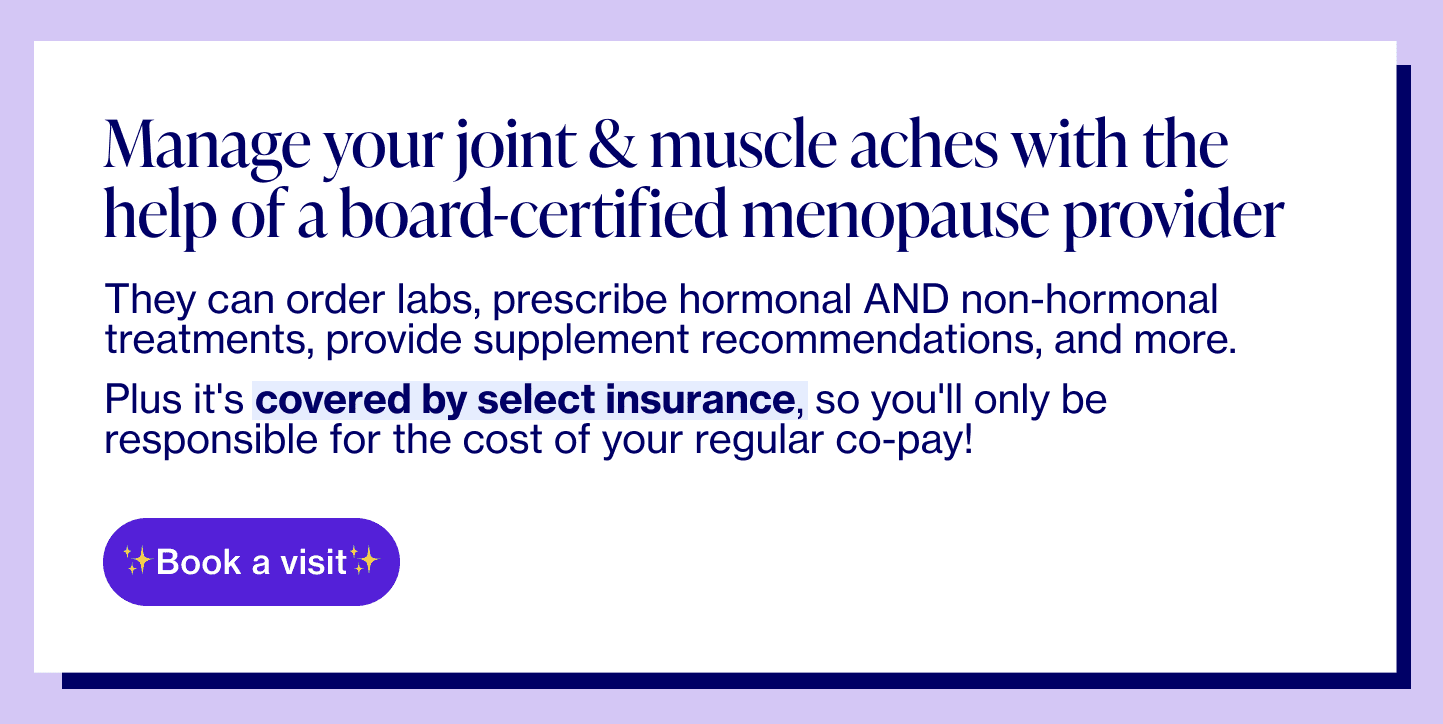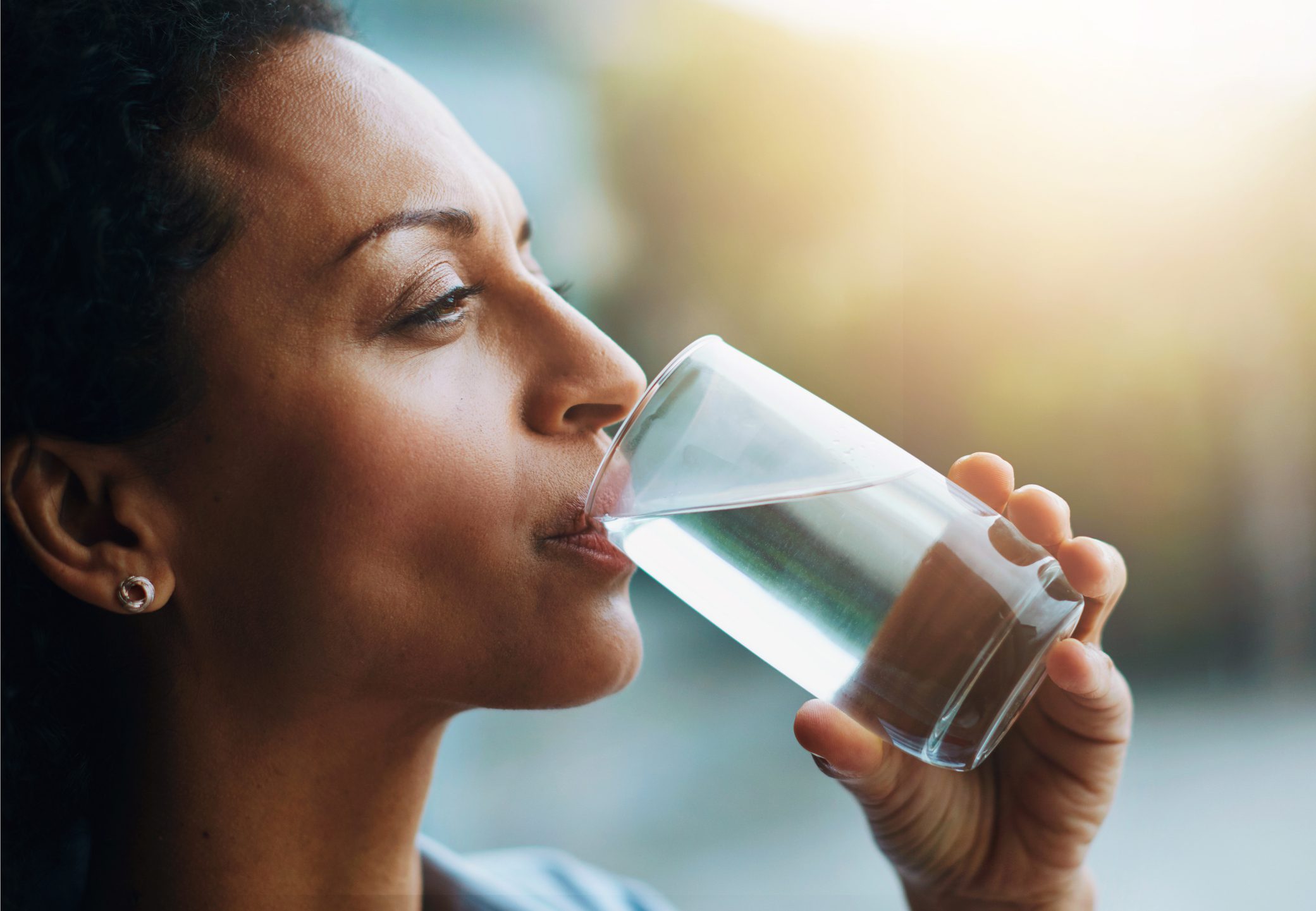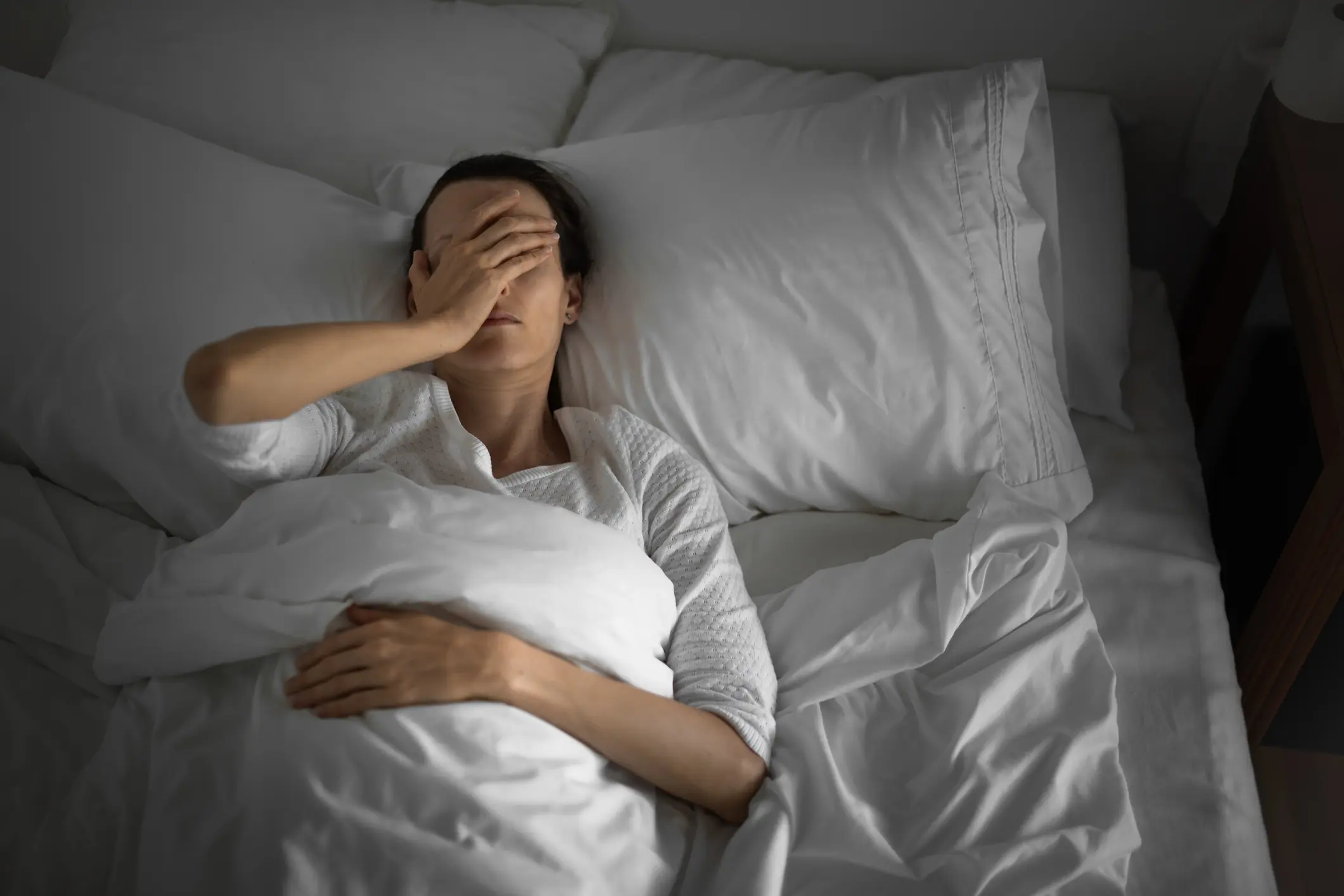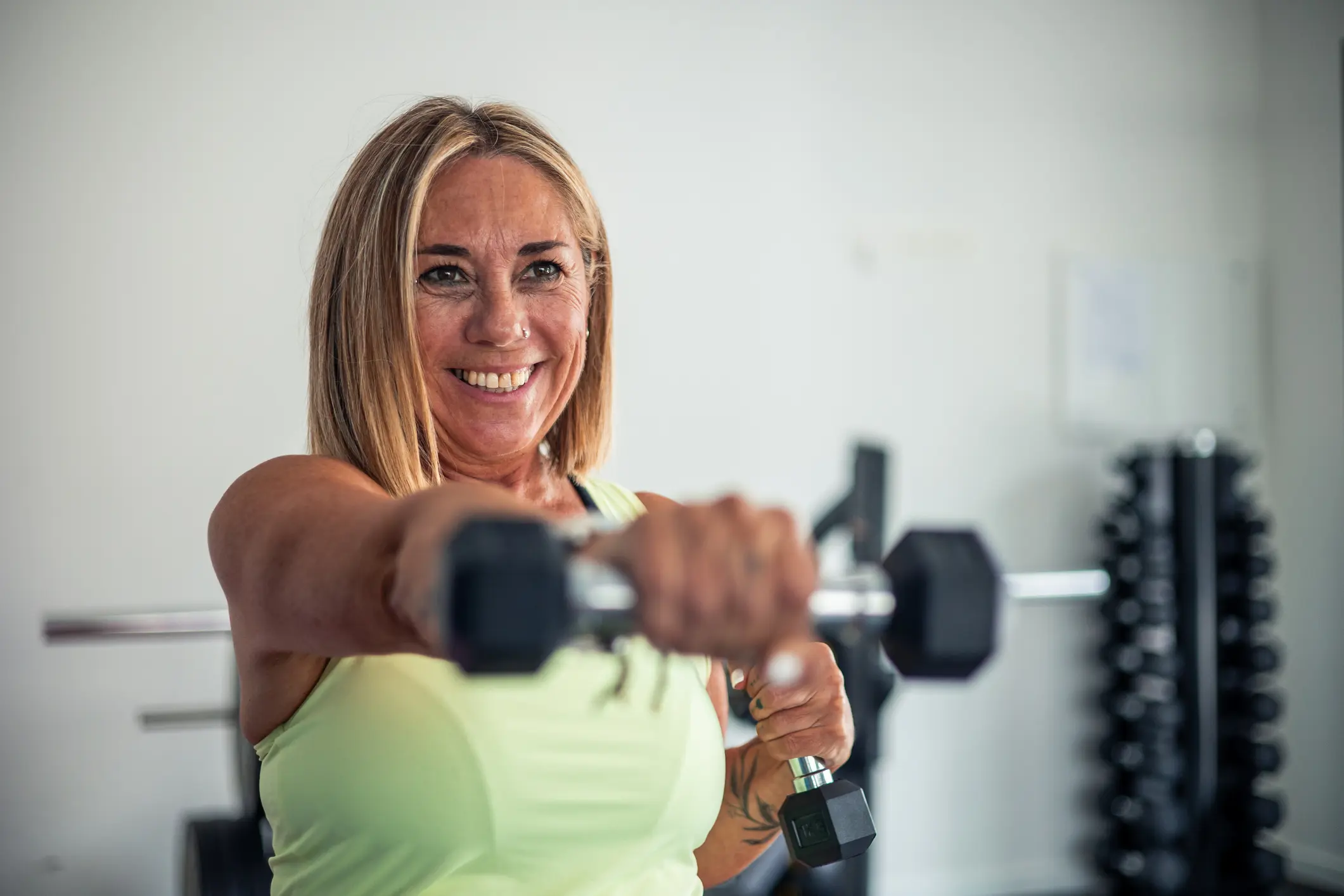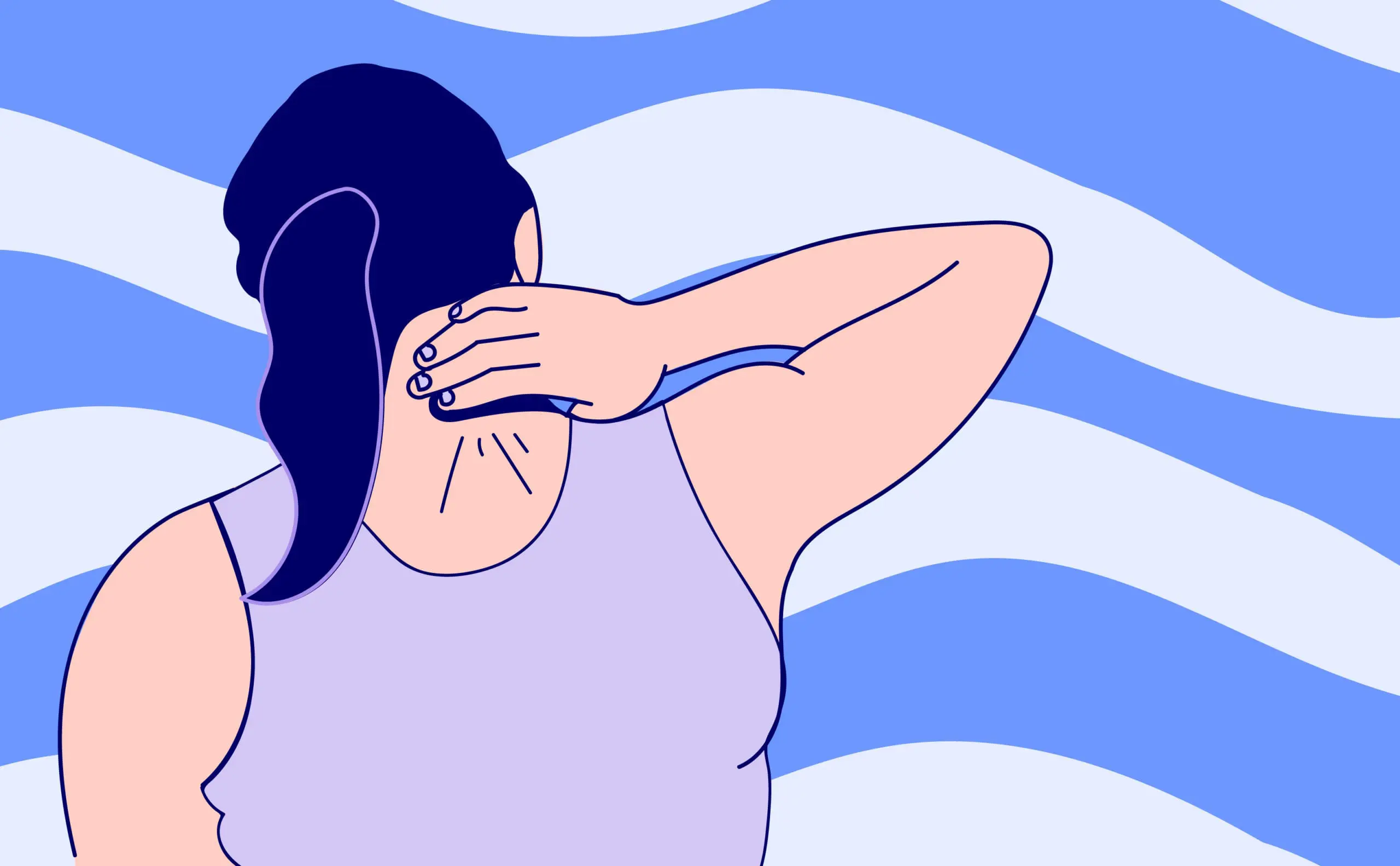
Published on Mar 18, 2024
Last modified on Sep 24, 2024
Joint Pain and Menopause: Understanding the Connection
7 min read

Shoulder pain, back pain, hand pain – does everything just hurt now?! We hear you, and know how disruptive joint pain, or arthralgia, can be. In fact, this common symptom was cited as the most troublesome for menopausal women in Singapore last year, ranking above insomnia and vaginal dryness in prevalence.
To make things trickier, it can be hard to distinguish menopausal joint pain from soreness after physical activity, or a more serious condition. We spoke with Jackie Giannelli, FNP, to understand what causes joint pain and how we can manage it, plus how to make sure our pain is taken seriously at the doctor’s.
What does joint pain feel like?
Joint pain is typically felt in the hands, feet, hips, knees, or spine, and is usually worse in the morning after we have been still for a long period of time.
It can also go hand and hand with Frozen Shoulder, a condition where the shoulder becomes stuck and painful to move due to inflammation of tissues surrounding the joint. Frozen Shoulder is most common in women and adults between the ages of 40 and 60.
What are the causes of joint pain?
Natural aging
Following a peak in muscle mass during our 20s, it begins to decline, with loss of muscle mass, strength, and function intensifying in our 40s and 50s. This can cause the sensation of “sarcopenia ” which, in non-science speak, basically means the condition that causes feelings of soreness. Unlike other symptoms of menopause such as hot flashes and vaginal dryness, sarcopenia isn’t usually owed to fluctuations in estrogen levels (shocker, we know!)
Studies evaluating the effects of age on lean body mass and appendicular muscle mass actually show that the rate of muscle mass decline for females doesn’t necessarily increase after menopause. So, this decline is owed more to the aging process than menopause. But, that doesn’t mean it’s totally our of your control! More on that below…
Weight Gain
Weight gain during menopause can contribute to joint pain as it increases pressure on the joints, causing inflammation in the body and making it more difficult to exercise.
Inflammation
Unlike sarcopenia, inflammation is heavily influenced by changing hormone levels. One of estrogen’s key functions is reducing inflammation, which it does by binding to the specific estrogen receptors on our joints and connective tissues. When levels decrease during perimenopause, the change can affect cartilage metabolism and induce inflammatory-like pain. Estrogen also supports joint lubrication, so the drop in this hormone is typically accompanied by a decline in lubrication, which can cause greater wear and tear and increased risk of joint pain.
Rheumatoid arthritis
This chronic inflammatory disorder causes the body’s immune system to attack its own tissues and joints, leading to swelling and feelings of achiness. Women are 2-4 times more likely to experience rheumatoid arthritis than men, and it usually appears in the late 40s, suggesting a relationship with hormonal changes during perimenopause.
Osteoarthritis
Not to be confused with osteoporosis, osteoarthritis is a condition that causes the cartilage cushioning joints to break down over time. When this happens, bones rub against each other, exposing nerves and causing pain.
4 tips for self-managing joint pain
1. Nutrition + Hydration
At Elektra, we’re big fans of the Mediterranean Diet which, in addition to supporting heart health, bone health and cognition, combats inflammation. This nutrition style is less restrictive than others, and privileges fresh produce, whole grains, legumes, and omega-3 fatty acids. Olive oil, paramount to the Mediterranean Diet, is particularly helpful here. The oil produces alperujo extract, which may play a part in platelet function, a key component in inflammation response. Read more about the Mediterranean Diet >>
Hydration also plays a huge role in maintaining muscle and joint health, so drink up!
2. Regular Exercise
Muscle is metabolically active tissue and strength training – as opposed to cardio – will help with weight maintenance/weight loss as well as strength, endurance, stability, and balance in order to slow down muscle loss. This training technique is also important for bone health, which is critical for women as we lose strength and bone density more rapidly at the onset of menopause (which can increase the risk of osteoporosis).
While it’s tempting to rest when experiencing the discomfort of joint pain, it’s important to keep moving. Low-impact exercises like pilates, barre, and yoga are a few great options for per- and postmenopausal women.
3. Supplements
- Glucosamine & Chondroitin: Both constituents of cartilage, when paired together, glucosamine and chondroitin may be effective for joint pain management and joint function support.
- Vitamin D: AKA “the sunshine vitamin,” Vitamin D is critical for bone and muscle function and may have anti-inflammatory effects. It can also be taken in supplement form to relieve menopausal joint pain.
- Omega-3 Fatty Acid: In addition to preventing artery disease and stroke, omega-3 fatty acids limit inflammation and tender joints.
- Turmeric: Found often as an ingredient in Indian cooking, turmeric is one of the top anti-inflammatory foods that can help ease joint pain (it works in a similar way as NSAIDs do).
4. Anti-Inflammatory Medications
Over-the-counter painkillers and anti-inflammatories such as ibuprofen are a treatment option to help manage pain as well. If using long term, make sure to do so under the supervision of a provider as they can have gastrointestinal side effects.
When to see a doctor and how to prepare
If you’ve tried some of the lifestyle changes above and your symptoms have persisted or worsened, it may be time to see a doctor. Not everyone who has joint pain is in menopause and not everyone who is in menopause has joint pain. Most joint pain is not treated with hormones; however, new joint pain that starts during the menopause transition should always be evaluated through the lens of hormonal changes.
For example, autoimmune conditions like rheumatoid arthritis are more commonly diagnosed during the menopause transition, and therefore a provider who understands the connection can do a better job of treating the root cause.
Hormone Replacement Therapy (HRT) may provide a modest degree of musculoskeletal pain relief. Doctor’s have varying degrees of knowledge when it comes to HRT, so if you’re seeing a provider with the intent to ask about it, we suggest reading up a bit beforehand.
Here are 4 things to keep in mind at your visit:
- Menopausal hormone therapy has not been shown to independently improve pain in the joints. However, if you are dealing with other peri/menopausal symptoms and also experiencing a new onset of joint pain, it may be worth calling that out to your healthcare provider. Elektra Guide Grace Veras Sealy shares about her experience on HRT here.
- Estradiol does have anti-inflammatory properties, so it is possible that this may help with pain related to inflammation in the joints. However, given the multifactorial processes that cause joint pain, it is very difficult to prove whether HRT will be helpful before trying it.
- If you do start HRT for other symptoms, make sure to pay attention to your joint pain and track how it improves or changes. If your joint pain does not improve despite starting HRT, it is likely that it is related to other causes and may necessitate a different course of treatment
- Consider the pain scale. Your doctor will likely ask you to describe your pain on a scale of 0-10, where 10 is “the most pain you have ever felt” and 0 is no pain at all. It can be difficult to answer this question in the moment, so we suggest thinking about it beforehand, especially as pain comes up. It’s also helpful to tell your provider when the pain first started and what time of day it is most intense, as well as what pain mediation techniques you have used (such as supplements and prescription medications), and which worked best.
The bottom line
Like many other menopause symptoms, joint pain may be caused by a number of root causes, which can be frustrating when we just want an answer. Fortunately, there are several ways to treat and prevent joint pain, many of which we can do on our own, starting with diet and exercise.
If you do decide to see a provider, remember that you know your body, and don’t hesitate to bring a log documenting your experience with symptoms and how they have impacted your quality of life.
Interested in care? Learn more and book a visit with an Elektra provider.
READ MORE:
